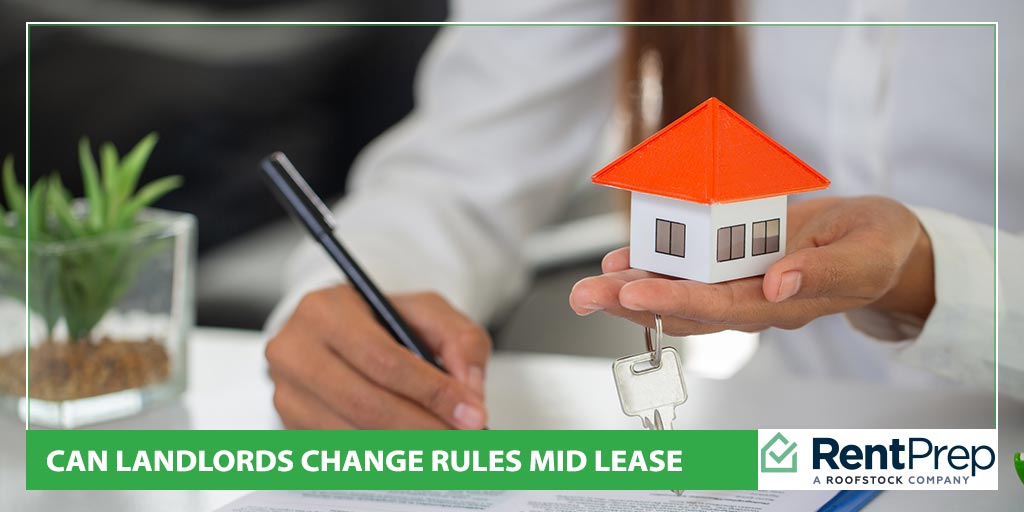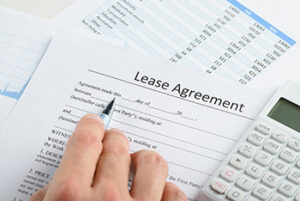

Discover the essential dos and don’ts for landlords considering lease changes. Learn when and how to legally adjust your rental agreements to align with your business needs without breaking into legal pitfalls.
As a landlord, you might want to change the lease rules you have in place to better reflect your business’s needs. Can landlords change rules mid-lease, or is this illegal?
You must understand when you can and cannot change the rental agreement you use with your tenants. Violating the lease terms or trying to force changes when they’re not allowed can lead to significant, costly legal issues. Landlords need to avoid these issues at all costs, so it’s vital that you get a good understanding of this topic.
Do you know when and how to change your lease agreements properly? Today, learn all you need to know about lease changes in our landlord lease workshop.
When can a landlord add house rules to a lease, and how can these rules be legally added? In today’s workshop, we’ll break down details about lease changes that all landlords should know.
No, landlords cannot legally change lease terms mid-lease without the tenant’s consent. Any adjustments require a mutual agreement, typically formalized through a lease addendum signed by both parties. Unilateral changes by the landlord are prohibited to ensure fairness and adherence to the original contract.

It may seem that the landlord should be able to change the rules of their lease because they own the property and can switch things up when they want to, as long as the rule change is fair. Right? Wrong.
A lease agreement is a contract , which means that two parties come together on an agreed-upon exchange of terms and benefits for both sides. Landlords and tenants sign a lease agreement, agree to perform specific duties, and give up some things in the process.
If a change in a rule affects the terms and conditions of the contract, that can be a problem. Any rule change that affects the tenant’s wallet or how they live in the rental property day-to-day can be considered a change in the terms and conditions of that lease agreement contract. Landlords cannot change anything they want when they want.
Allowing landlords to change the lease agreement could lead to situations that greatly affect the tenants’ daily lives, which is not okay.
To change the rules that both parties agreed to without a new agreement from both parties would be illegal. So, how can you change a lease agreement that needs to be updated as soon as possible? The only way to do this mid-lease is through a lease addendum.
Sometimes, landlords and tenants want to change the lease agreement mid-lease. Unlike one-sided changes, this is possible.
There are ways that landlords and tenants can make changes to the lease agreement . This is known as a lease addendum. This type of lease change means the landlord and tenant agree to amend a particular part of the signed contract.
A lease addendum is a new contract signed and tacked onto the original lease to update or add new terms to the existing lease.
The key to using lease addendums is to remember that both sides must agree on them before they go into action.
A lease addendum gives the tenant some power to approve or negotiate the change because it cannot take effect unless both parties agree and sign. The change only occurs if they both enter into that agreement.
Addendums can be made for nearly any term outlined in the original lease agreement so long as both parties agree to the changes. It cannot be enacted if either party does not want to sign off on the change.
Looking at a specific example to understand how lease addendums work is helpful.
One lease addendum example might be that in the original lease agreement, the landlord promised to pay for basic cable as part of the rental agreement. The tenant now wants a satellite TV service installed, but it is much more expensive than the cable you offer as part of their lease.
The landlord and tenant agree that the landlord will no longer provide or pay for basic cable and that the tenant can get satellite TV installed at the rental property and will assume all costs for that service. The lease addendum would outline these new terms, and both parties would sign the addendum.
Once both parties sign the addendum, it should be added to the original lease agreement on file so that both parties have a copy of the new terms. In some cases, landlords and tenants will also initial the original lease again to make it clear that an addendum has been created.
Check out this video for more information on changing rules mid-lease:

Inexperienced landlords often try to effect changes mid-lease because they don’t know any better. Often, it is a reaction to a current tenant problem, such as making new rules about parking, restricting access to a property amenity like a pool or clubhouse, or imposing additional requirements for yard maintenance .
While the landlord is simply trying to enact these changes to regain control of their property, that doesn’t mean they can. Instead of trying to make changes to an agreement mid-lease, you need to address these problems more directly and reasonably.
While there are dozens of things a landlord may want to change, tenants and landlords must know how to usher in a new policy or rule. It can be done—it just needs to be done right rather than in the middle of a current lease agreement.
These are five common changes that landlords try to enact mid-lease:
As mentioned above, unilaterally changing the lease in the middle of the agreement period to address these issues is not permitted. So, how can a landlord better prepare to handle these issues legally and appropriately in the future?
If your property includes pool rights, community areas, and other spaces where you might need to change the rules mid-lease, this must be reflected in the original lease. Rather than including the specific pool rules in the lease, for example, you could write in the lease agreement that “all posted rules must be followed at the community pool.”
By writing the lease agreement with flexible terms reflected in signage or other areas that can be changed at any time, you can maintain control over the community areas even though you cannot change the lease.
Similar terms can be added for things like parking spaces or lockout policies; the terms used in the lease agreement can state that these amenities can be changed at any time within reason. Again, this allows the landlord some leeway in making adjustments when, for example, the costs of things change.
Sometimes, you will have to wait out the lease agreement. If, for example, you realize that you priced the property too low for the area, you can only raise the rent once the lease ends or any applicable lease terms come into play.
It’s not fun to wait out something like this, but that is often your only option as a landlord. If this happens, prepare your next leases more carefully and avoid this situation again.
When having disagreements with tenants, it can be challenging to see them doing things you don’t appreciate but do not violate the lease agreement. However, you cannot do anything about these things, as arbitrarily changing the house rules is illegal.
However, you can end a lease agreement or ask a tenant to comply with the lease if they violate it. Make sure to keep an eye out for these issues and act quickly if violations do occur.
To get a real-life idea of how this issue could affect a landlord like you, see how one landlord’s misinformed decision led them to a world of trouble.
In the spring of 2014, a news story about a landlord in California garnered much attention. The landlord had sent his tenants a notice that said each tenant needed to prove that their income was at or above a certain amount and have a specific credit score, or else they would have to move out.
Angry tenants spoke to the press and their attorneys as the story spread.
Interviews with lawyers and other landlord and tenant experts immediately pointed out that the landlord was in error. A few days later, the landlord sent another letter to tenants asking them to disregard the earlier notice.
We’re a tenant screening company and not lawyers—so we asked our friends at Avvo if they would shed light on this situation.
Listen below as we discuss this subject with Esther Sirotnik of Avvo’s General Counsel.
We highly suggest Avvo’s online directory as a cost-effective resource for professional advice.
After getting Esther’s take, let’s return to the original story from California and see how it applies.
What was wrong with the landlord’s request? Income is not a protected class, and a landlord can set any approval criteria if it doesn’t cross into discrimination.
Smoking, criminal history, and several other distinctions are not protected either, so why did the landlord catch so much heat for his notice?
The landlord got into such hot water with tenants and the landlord/tenant community at large because he attempted to change the tenancy conditions during an existing lease agreement.
He was trying to re-screen existing tenants and impose income levels and credit scores that had not been previously established. In other words, the landlord tried to change the terms of a contract while it was still in effect.
The question, —can landlords change the rules in mid-lease—has a simple answer: no.
Can a landlord change a lease agreement at any time, or is it always forbidden? It’s essential to understand when you can change lease agreement rules and when you are not.
Landlords can implement rule changes when a tenant’s lease agreement expires. In other words, landlords should notify the tenant of the upcoming change well before renewing the lease so the tenant will know of the change before signing the new agreement.
To adapt to changing needs, landlords might also consider transitioning a fixed-term lease to a month-to-month agreement at the end of the lease term. This requires clear communication and agreement from the tenant, and any changes should be documented in a lease addendum or a new lease agreement.
If the tenant is in a month-to-month lease agreement, the landlord must provide sufficient notice to the tenant of the change—generally a 30-day notice, although some states may allow longer or shorter notification periods.
Rules can also be established for new, incoming applicants who can choose to abide by them when signing the lease agreement .
If a landlord wants to implement a major change to an existing lease, the two ways to do so are via a lease addendum or waiting until the current lease agreement expires.
If your lease agreements are written thoroughly and with the correct language, you likely will not end up in a situation where you want to change the agreement in the middle of the lease. Use RentPrep’s landlord starter form kit today to ensure your lease is solid !
Landlords cannot legally change the lease or its terms without providing proper notice and obtaining agreement from the tenant. Any changes made without the tenant’s consent or notice are considered invalid and could lead to legal repercussions.
Find out when a landlord can change a lease if the need is there.
If the tenant and landlord agree, a lease can be amended and changed to better suit both parties’ needs. However, this will not always be possible because there will be cases when the tenant or the landlord does not want to make changes.
When both parties agree, the actual lease amendment process is relatively easy. A new lease can be signed, or additional contracts can be signed and added to the original lease. The latter option is more common, as most landlords do not want to void the original lease.
The key is that both parties must sign all documents, and any conflicting information must be reconciled in the most recently signed document. This ensures that there will not be any disagreements because of differences in documentation, so it is vital that you review everything very carefully when executing lease amendments.
Amendment and addendum are two very similar words, so understandably, you may need clarification about the difference between a lease amendment and a lease addendum.
A lease amendment is a type of contract that changes an existing agreement. This means that the original contract’s terms will no longer be in effect, and new terms will take their place. This type of lease document may modify just one section of the original rental agreement, or it might rewrite it entirely.
A typical example of a lease amendment might be changing how the utilities are managed at the property. If the tenant decides to get their own cable TV plan, an amendment may be needed to modify the original language about how the cable service will be paid.
On the other hand, a lease addendum is a document that adds more terms to an existing lease agreement. This means a topic not covered in the original document must be added. A lease addendum allows that topic to be attached to the agreement.
For example, a lease addendum would be needed to add a pet to a property where there were previously no pets allowed or specific rules about pets. A pet addendum would allow both parties to agree to terms for the pet to stay at the property.
In some cases, there may be updates to the original lease agreement that are part amendment and part addendum. Ultimately, the language used to refer to each of these contract changes is only one of the important factors. The key to pay attention to is that all tenants and the landlord make all contractual agreements.
No. Landlords cannot make changes to the lease after either party signs it. If the tenant agrees to add in some changes, both parties must sign the agreement again to ensure it is legally valid.
While it is possible to renegotiate a lease after signing, it is better for everyone involved if all negotiations are done before the lease agreement is signed. Otherwise, trying to come to an agreement can lead to bad blood and strained relationships. If both parties agree to a renegotiation, amendments and addendums can be used to update the contract.
Please note that while landlords cannot force tenants to sign a new lease mid-term without their consent, renegotiations can lead to signing a new lease agreement if both parties agree to the terms. Coercing a tenant into signing a new lease under duress or without their full agreement is not legally enforceable.
No. Landlords cannot add fees for previously free services during the lease. Asking a tenant for more money during their lease is not allowed.
But can a landlord add fees mid-lease in any circumstances?
The only times that a landlord can add fees is through something like a pet addendum. This means that the original lease may have said no pets, but the landlord and tenant have agreed to allow a pet as long as a pet deposit and fee are paid. In this case, the landlord can add a fee through the addendum, but only because all parties agree and sign a new contract.
Similar circumstances where a new service is being offered at a fee allow landlords to add fees mid-lease, but these fees must be optional. Required fees can only be added with previous agreement by everyone involved.
No. A new landlord who has purchased the property from the previous landlord cannot change the rental agreement mid-lease. They must continue the lease terms as if they had signed it themselves.
The only circumstance under which a new landlord might be able to change the lease is if the original lease included special terms in the case of the sale of the property. While this terminology is uncommon, such language can exist in cases where the previous owner already had the property on the market when the lease was signed.
A landlord cannot raise rent after the lease has been signed. They must wait until that lease ends.
If a tenant signs a one-year lease, a landlord typically will issue a rent renewal letter 11 months later.
At that time, the landlord will inform the tenant that the rent will increase. Once the 12-month lease is up, the landlord can increase the rent.
A landlord can only raise rent mid-lease if the lease allows for this. Some two-year leases, for example, will allow for a limited rent increase at the one-year mark. A rent increase can happen if these terms are in the original lease.
Can landlords unilaterally change rules mid-lease without agreement from the tenants? No, absolutely not. The only way you can change an ongoing lease agreement as a landlord is to wait for the lease to end or to sign a lease addendum with the tenant.
You must refrain from violating the lease agreement or trying to enforce new rules if your lease agreement doesn’t allow this flexibility. Violating a tenant’s rights this way could lead to considerable legal or financial trouble, so avoiding this problem is key.
Write a solid lease agreement from day one, and include adjustable lease terms where possible. With these things in mind, you can move forward confidently and avoid this type of situation altogether.
Our tenant screening services have been trusted by over 100,000 landlords & property managers since 2007. SEE OUR PACKAGES
Starting at just $21.00!